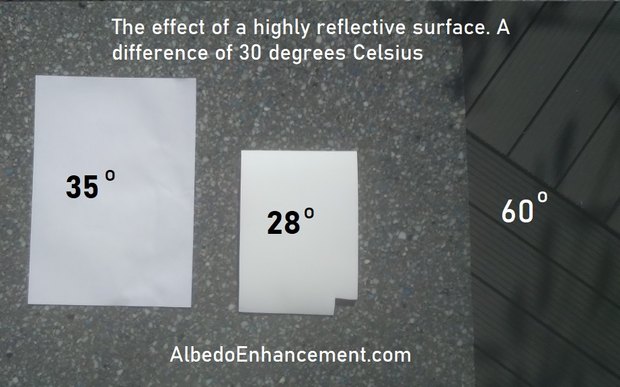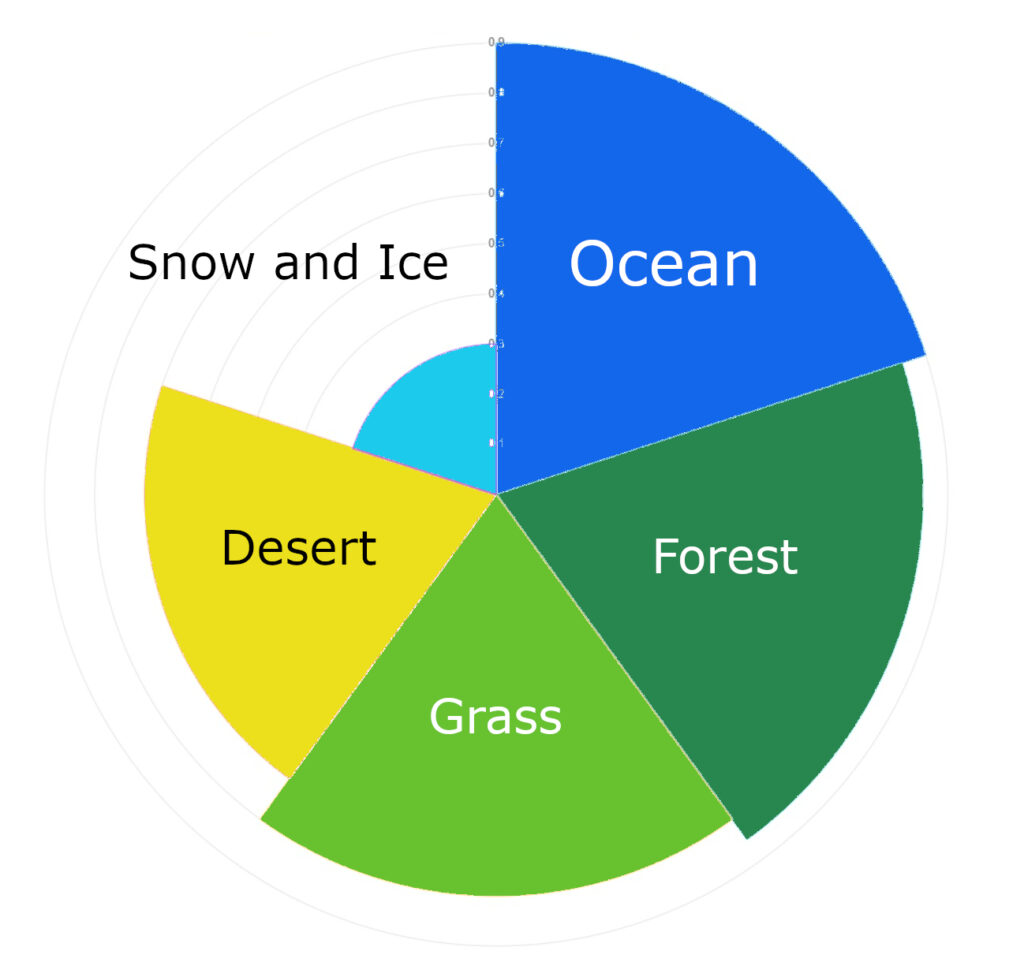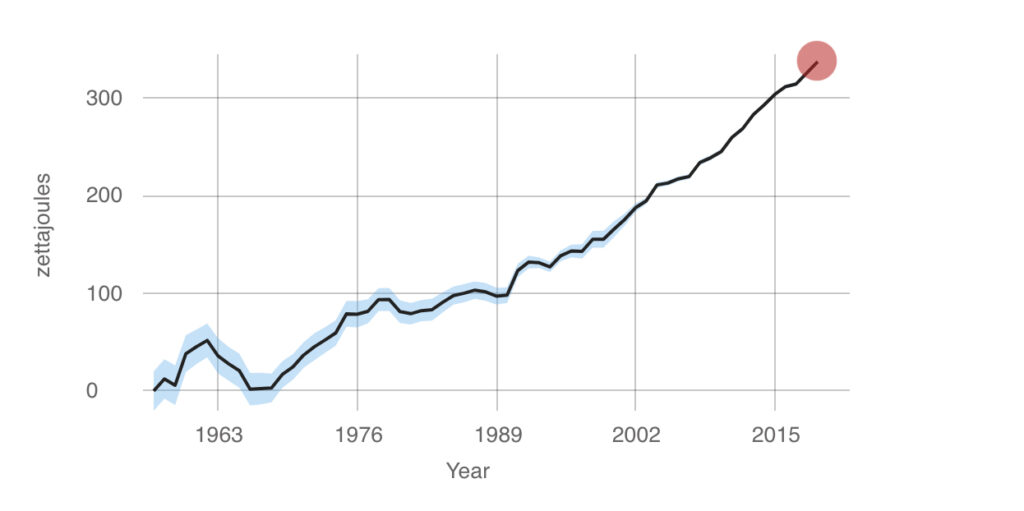Dutch, Spanish, Italian, Greek, French, Arabic, Turkish, English, German,
Videos on how to make reflective paints
Bright White Ceramic Cools Buildings By Reflecting 99.6% of Light
Send your earth reflection information/questions to info@greencheck.nl or @climatebabes (X)

What is Albedo
Albedo is a measure of the reflectivity of a surface, often used to describe the reflectivity of the Earth’s surface. Specifically, it refers to the proportion of incoming solar radiation that is reflected back into space by a surface. Surfaces with a high albedo reflect more solar radiation and absorb less, while surfaces with a low albedo absorb more solar radiation and reflect less.
Types of land surface and their energy absorption


How to get rid of excess energy
The above picture shows that Earth does not absorb energy evenly, its albedo varies. This shows us that we can keep energy from staying on Earth if we change the nature of its surface, its reflection, its albedo.

As you can see from the spectrum above our atmosphere is not uniformly transmissive to light. This is because light gets absorbed by various molecules like N2 and H2O and CO2. That absorbtion is however very specific, and if there’s no molecules that can absorb light of a specific energy content (wavelength) then it will pass through as if nothingis there. Fortunately there is a band in the IR part (heat) of the spectrum that is not absorbed easily. This is called the “IR window” red (bar on the right).

Enhancing Albedo on Land
On land we can increase albedo for anything humans build by using more reflective materials, whiter paint (see below). Concrete that is brighter is cooler in summer. Through the use of special materials that reflect in the Infra Red (IR) spectrum one can even create paints that will allow a surface to cool below the ambient air temperature. This is because space is very cold, so you always lose heat if you can radiate to space.
“An experiment conducted in western Athens found that brightening of asphalt and concrete pavements reduced ambient temperature by 7.5 degrees and 6.1 degrees Celsius respectively.” (link)
Different land use means different Albedo. Sometimes it is a tradeoff. Desert has higher albedo than grass or forest, but grass and forests have other benefits. Forests can cause cloud formation, and clouds have high albedo, so one could wonder if this effect should be considered. When a surface is covered in snow it will be very cold, not only because of the altitude or season, but also because the solar heat can not stay and warm the air, it is reflected right back into space.
Especially for farmers there seems to be an opportunity to keep crops cool if part of the land can be covered with high albedo materials, preferably organic or reusable. Organic materials like protein foams can have very high albedo. The effect can mean lower heat generation near the soil, so it doesn’t dry as fast and crops don’t wither.
In the build environment
“A recent study in Los Angeles County analyzed the energy savings of modestly increasing roof albedo, finding that this could produce savings from reduced energy use of 23% to 40%, making cool roofs a financially attractive option.”
Cool Roofs
Many cities now have programs to reduce roof albedo, clik on “Cool Roof Initiatives” to go to a special page on those. Increasing reflection of roofs cools them as said above. The materials used can however be less than what is desired for true Earth cooling.
Cool Streets/Pavements
Cool streets can also greatly increase livability of a city. Here is link to an Australian initiative. Here is a link to the Cool Pavement initative.
Cool pavements can make people feel warmer, because although the pavement remains cool, anyone above it gets more solar radiation (from above and reflected). This is less of a problem on roads or streets.
Enhancing Abledo in the Oceans
The oceans have very low albedo, less than 1%. They absorb almost all heat that hits them. This is a serious challenge. The oceans are accumulating heat now, because the atmospher doesn’t allow the heat to pass as easily as it did 100 years ago. Surface temperatures are higher as a result, and this needs to be dealt with for climate change to be limited.

Anything on the surface of the ocean will increase its albedo significantly. Ocean foam has high albedo. Some sunlight scatters off the water. We may be able to increase ocean albedo which also increases shade to ocean life using floating materials, which as the ocean is full of plastic and has all the elements to make hydro carbons as well as organic fiber, is practically possible. This is one of the things that we need to work on.
Albedo Clothing
There are still very few examples of solar heat reflecting clothes, even though they can be made. More to follow here soon.
Albedo Paints
There are two approaches to high albedo paints with the right reflection spectrum, one is to make essentially a foam that works as a mirror because it has spherical bubbles (the light bounces around). The other is to use materials that have strong IR reflection. These paints don’t have to be expensive. You can see an example here how to do it on this post.
Below an explanation of making Barite paint by Tech Ingredients..
Albedo Materials
High reflective materials can come in many forms, from foams to PFTE to ceramics. The key is to have it send photons back from where they came. You will find a list of them here.
Mirror solution to Albedo
It seems mirrors, glass/aluminum/silver, although sounding plausible are not a practical solution to reflect energy back into space. The reason is their energy requirement in production, maintenance. This stands in large contrast with the foam and IR reflective material solutions. There are several initiatives which I think are pretty weak and should be considered fake. One of them is Meer.org. You can have good time, get a lot of subsidies and sympathy but achieve nothing. This is not what we need, we need proactive practical application of solutions.
That is not to say we should ignore mirrors but we should make sure they are energetically and emissions wise the best bang for our buck.
A 3m dielectric reflector is not made of metal yet reaches incredible reflexivity..